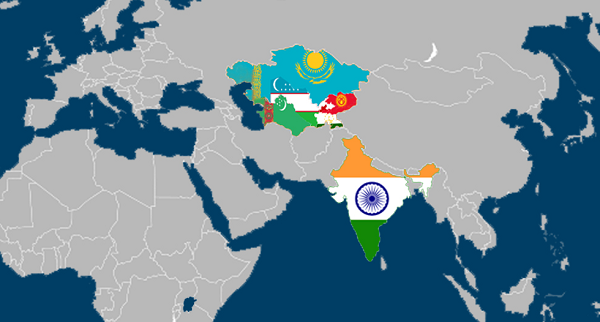- Courses
- GS Full Course 1 Year
- GS Full Course 2 Year
- GS Full Course 3 Year
- GS Full Course Till Selection
- MEP (Mains Enrichment Programme) Data, Facts
- Essay Target – 150+ Marks
- Online Program
- GS Recorded Course
- NCERT- First Ladder
- Polity
- Geography
- Economy
- Ancient, Medieval and Art & Culture AMAC
- Modern India, Post Independence & World History
- Environment
- Governance
- Science & Technology
- International Relations and Internal Security
- Disaster Management
- Ethics
- Current Affairs
- Indian Society and Social Issue
- CSAT
- 5 LAYERED ARJUNA Mentorship
- Public Administration Optional
- ABOUT US
- OUR TOPPERS
- TEST SERIES
- FREE STUDY MATERIAL
- VIDEOS
- CONTACT US
Dignity in Dying: Karnataka Embraces Passive Euthanasia
Dignity in Dying: Karnataka Embraces Passive Euthanasia

Introduction
In January 2025, Karnataka became the second Indian state, after Kerala, to issue an order implementing the Supreme Court's directive permitting passive euthanasia for terminally ill patients. This significant move underscores the evolving legal and ethical landscape surrounding end-of-life care in India.
Key Highlights of Karnataka’s Order on Passive Euthanasia
Karnataka’s decision on passive euthanasia empowers terminally ill patients to refuse life-sustaining treatments, ensuring their right to die with dignity under strict legal and medical safeguards.
1. Implementation of Supreme Court Directive
- Karnataka became the second state in India (after Kerala) to implement the Supreme Court’s 2018 ruling on passive euthanasia.
- The Karnataka government’s decision also aligns with the Supreme Court’s updated 2023 guidelines, which simplified the process of executing passive euthanasia and living wills.
2. Formation of Medical Boards
- Hospitals across the state must establish medical boards to evaluate patients eligible for passive euthanasia.
- District health officers will appoint registered medical practitioners to serve on these boards.
- These boards will be responsible for certifying cases where life-support withdrawal is appropriate.
3. Advance Medical Directives (Living Wills)
- The order allows patients to create Advance Medical Directives (AMDs) or Living Wills, specifying their wishes for medical treatment if they become incapacitated.
- Medical boards will review and respect the living will before making any decisions.
4. Procedure for Approving Passive Euthanasia
- A primary medical board will first examine the patient’s condition.
- If passive euthanasia is deemed appropriate, the case is reviewed by a secondary board.
- Final approval will be given following strict legal and ethical guidelines to prevent misuse.
5. Objectives of the Order
- To uphold patient autonomy and allow terminally ill individuals to avoid prolonged suffering.
- To provide legal clarity for medical professionals handling end-of-life care.
- To ensure ethical safeguards against misuse or coercion.
Legal Framework: Euthanasia in India
1. Aruna Shanbaug Case (2011)
- Background: Aruna Shanbaug, a nurse, was in a persistent vegetative state for over 42 years after a brutal assault in 1973.
- Supreme Court Judgment:
- Recognized passive euthanasia as legal under specific conditions.
- Allowed withdrawal of life support in cases of permanent vegetative state.
- Established a procedure requiring High Court consent.
2. Common Cause v. Union of India (2018)
- Supreme court included The Right to Die with Dignity as a fundamental right under Article 21 of the Constitution.
- Legal Recognition:
- Allowed passive euthanasia under strict guidelines.
- Introduced Living Wills (Advance Directives) for individuals to express end-of-life preferences.
- Set up a two-tier approval process:
- Medical Board examines the patient’s condition.
- Judicial Oversight ensures ethical implementation.
3. Supreme Court Guidelines Simplification (2023)
- Why the Revision?
- The 2018 guidelines were complex and difficult to implement in practice.
- Key Changes:
- Simplified the procedure for executing a Living Will.
- Reduced legal hurdles for patients and families.
- Ensured faster decision-making by medical authorities.
Understanding Euthanasia: Passive vs. Active
- Passive Euthanasia: Involves withholding or withdrawing medical treatments that prolong the life of a terminally ill patient, allowing natural death to occur. Legal in India under specific guidelines.
- Active Euthanasia: Involves deliberate medical intervention, such as administering lethal substances, to end a patient’s life. Illegal in India.
The legal acceptance of passive euthanasia in India is rooted in the distinction that, in passive euthanasia, death results from the underlying medical condition, whereas active euthanasia involves direct intervention to cause death.
Positive Impacts of legalizing Passive Euthanasia:
1. Respecting Patient Autonomy and Right to Die with Dignity
- Euthanasia aligns with the principle of personal autonomy, allowing patients to exercise control over their end-of-life decisions.
2. Relief from Prolonged Pain and Suffering
- Terminal illnesses like cancer, ALS (Amyotrophic Lateral Sclerosis), and multiple organ failure cause extreme pain, where even palliative care is insufficient.
3. Reducing the Financial Burden on Families
- Prolonged ICU care is financially draining.
- Many families face debt and economic hardship while sustaining a terminally ill patient with no chance of recovery.
4. Easing the Burden on Healthcare Resources
- Hospitals often face a shortage of ICU beds and ventilators.
- Allowing passive euthanasia for terminally ill patients frees up resources for those with better chances of survival(need was highlighted during COVID-19)
Navigating the Pitfalls: The Need for Strict Monitoring in Passive Euthanasia
1. Potential for Misuse and Coercion
- There is a risk that family members or medical institutions might pressure patients to opt for euthanasia for personal or financial reasons(especially in families/societies with elderly neglect)
- Example: Netherlands has reported cases where elderly patients felt pressured into euthanasia.
2. Ethical and Moral Concerns
- Many religious and ethical traditions oppose euthanasia, arguing that human life is sacred and should not be deliberately ended.
- The Catholic Church strongly opposes euthanasia, stating that only God has the right to end life. Similarly, Hindu philosophy emphasizes karma and natural death as part of the life cycle.
3. Psychological Burden on Doctors and Healthcare Workers
- Physicians take an oath to "do no harm", and euthanasia contradicts this principle.
- Some doctors may struggle emotionally with the idea of ending a patient’s life, even if it is legally allowed.
4. Risk of Slippery Slope Effect
- Legalizing passive euthanasia may lead to demands for active euthanasia, and eventually, euthanasia for non-terminal conditions like mental illness or disabilities.
- Example: In Canada, the initial euthanasia law was limited to terminally ill patients, but later expanded to include patients with severe depression and psychiatric illnesses. This highlights the risk of gradual moral and legal expansion.
5. Impact on Palliative Care Development
- Some argue that instead of legalizing euthanasia, healthcare systems should improve palliative care to ensure that no patient has to suffer.
- If euthanasia becomes common, investment in pain management and end-of-life care might decline.
- Example: In India, palliative care infrastructure is still weak, with very few specialized centres.
Global Practices
Netherlands (Legal Since 2002)
- Both passive and active euthanasia are allowed under strict medical guidelines.
- Patients must have unbearable suffering with no hope of recovery and must make repeated requests for euthanasia.
United States (Varied Laws by State)
- Some states like Oregon, Washington, and California allow physician-assisted suicide (E.g.Oregon allows physician-assisted suicide for terminally ill patients with a prognosis of six months or less to live ).
India (Passive Euthanasia Only)
- India only allows passive euthanasia, following Supreme Court guidelines.
- States like Kerala and Karnataka have taken steps to implement court orders at the state level.
Way Forward:
- Euthanasia presents both benefits and challenges—while it respects autonomy and relieves suffering, it also raises moral, ethical, and legal concerns.
- Stronger legal safeguards and better palliative care options are essential to prevent misuse while ensuring dignity for terminally ill patients.
- States must ensure proper implementation, ethical medical oversight, and legal clarity to protect patient rights while preventing exploitation.
- As India moves forward, lawmakers should consider enacting a comprehensive pan-Indian law on passive euthanasia with clear guidelines and robust mechanisms.
|
Also Read |
|




